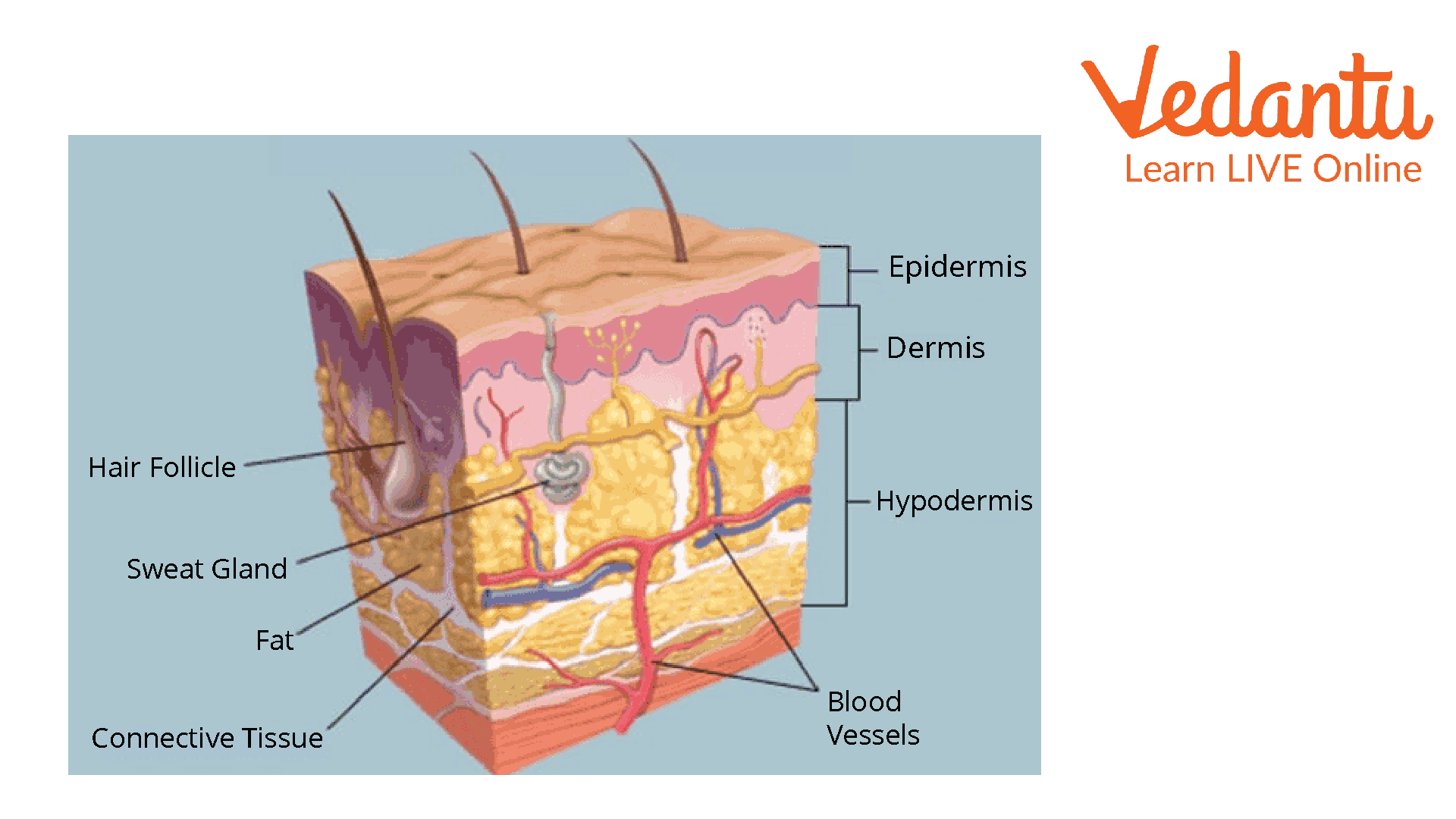




An Overview of Skin
The skin is a human organ that completely covers the body to protect internal organs from the outside environment. It is the biggest organ in our body and serves a variety of other purposes in addition to providing protection. Human skin has hairs covering some areas, such as the skin on the skull. The body's hair, however, varies from person to person. Genetics determines whether a person has more or less hairy skin than another.
What is Skin Composition?
Skin is the outer layer of all animals with backbones, including humans. It protects the body from germs, injuries, and hot or cold temperatures. Some animals have unique parts that make them safer. Scales cover the skin of fish and reptiles. Most mammals have fur, but not enough to be noticeable.
Layers of Skin

Layers of Skin
There are three layers to human skin.
The thin outer layer is the epidermis. New epidermal cells replace dead ones. It creates melanin which tones the skin. The epidermis contains nail-making cells.
The dermis is the intermediate skin layer. It maintains and strengthens the epidermis. Dermis fibres make skin strong and elastic. The dermis includes nerves and blood vessels.
The thickest skin layer is primarily fat, which is Hypodermis. This fat nourishes the other layers.
The skin releases some bodily chemicals. Sweat glands release dripping sweat via skin pores. Other skin glands create an oil that makes the skin oily, and excess oil causes acne.
Composition of Different Layers of Skin and Their Functions
Composition of Epidermis Skin Layer - The outer layers of skin, or epidermis, have dead skin cells on their top surface. The first line of defence against germs and dust is here. Because the epidermis lacks a blood supply, the outermost cells are continuously replaced by new cells.
Composition of Dermis Skin Layer - The body's thicker dermis layer acts as a cushion for the body against external strain or stress. The nerve terminals that provide the sensation are found in the dermis layers. Additionally, it has sweat glands, blood arteries, and hair follicles, where hair grows.
Composition of Hypodermis Skin Layer - The third layer, known as the hypodermis, is not generally regarded as a component of our skin for various reasons. This layer's primary function is to supply the dermis layer with blood vessels and connect the dermis layer to the underlying muscles and bones.
Structure and Composition of Animal Skin
Every kind of animal has parts that help it find food. Some animals use camouflage to hide from animals that want to eat them. Some animals have unique parts, like the long, forked tongue of the water monitor lizard. They use it to find food and smell it.
An insect's hard outer skeleton, called an exoskeleton, is a specific part. Exoskeletons are like armour, keeping insects from getting eaten by predators and drying out. Exoskeletons can also have unique structures, like horns, that some beetles use to compete.
Conclusion
In this article, we have learnt about the composition of different layers of skin and their functions. The body's largest organ, the skin, comprises water, protein, lipids, and minerals. Your skin controls body temperature and guards against infections. Skin nerves enable you to experience emotions like heat and cold.
FAQs on Skin Composition
1. What is an Integumentary System?
The term "integumentary system" refers to one of the body's major organ systems, of which the skin is a component. Exocrine glands are a part of the integumentary system, including the skin, hair, and nails.
2. What is the composition of the epidermis layer of skin?
The epidermis comprises various cell types, including the following: Keratinocytes are responsible for the production of the protein keratin, which is the principal constituent of the epidermis. Keratinocytes may be found in the epidermis.
Melanocytes: Melanocytes are responsible for the production of melanin, the pigment found in your skin.
Langerhans Cells: Langerhans cells are responsible for preventing foreign objects from penetrating the skin.
3. Why is skin important?
The skin helps your body stay at a steady temperature. If you get too hot, tiny blood vessels near the skin's surface, called capillaries, get bigger to let the warm blood escape. When the Sun shines on your skin, it also makes vitamin D.









